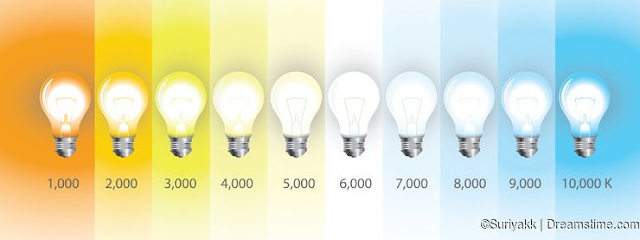Częstym pytaniem na grupach jest "Jaką lampę kupić?". Różnych odpowiedzi jest tyle, co samych odpowiadających. Postaram się przedstawić tutaj swój punkt widzenia - subiektywny, ale chyba zbalansowany i, mam nadzieję, pod każdym względem optymalny.
This is a guest post by Auriga.
To jest gościnny post napisany przez Auriga.
Lighting is key
If you want to paint or sculpt, lighting is key. After all, it's good to have some sort of a lamp. The catch is that lamps aren't made equal. You can categorize them in many ways, however the most important way of doing that depends on the source of light. We have lamps with built-in, and removable source of light. As fast as the first category is concerned, it's mostly LED lamps. They often let you change the intensity and temperature of light, but flexibility-wise, that's it! A costly does-it-all. I mean, I'm not against them. If you have one, keep using it. But if you don't, I don't think it's the right way.
Lightbulb
To introduce you to the second type of lamps, we need to consider an important question: what's so important in a lamp, that makes it so necessary?
The answer is quite simple, really. It's something that emits light:
A lightbulb!
Jako wstęp
do drugiego typu lamp trzeba się pochylić nad ważnym pytaniem: co jest takiego w lampie, co sprawia, że jest nam tak bardzo potrzebna?
Odpowiedź jest bardzo prosta. Coś co wytwarza światło, czyli...
..żarówka!
Two lightbulbs?
The truth is: the bare minimum required to paint is a lightbulb hanging on a wire. We're 30% done. It's little, but just enough to paint with success. Let's try and improve the percentage a bit. To do that, let's talk about lighting quality, and then - about ergonomics of work.
A lightbulb hanging on a piece of wire is just enough. The thing is, one bulb is hardly enough for optimal work. Shazam - we have now two lightbulbs hanging on separate wires. Why two? I can tell you that your eyes won't tire as much with two lightbulbs, and I can't explain scientifically why that happens. Also, what's also important shadows on the miniature will be smoother due to light coming from more than one source. I mean, just look at channels of some painting pros. Many paint with multiple lights (Marco Frisoni has three lamps), or with rigs that simulate surround light.
Prawda jest taka, że do malowania wystarczy teoretycznie żarówka w oprawce wiszącej na kablu z sufitu. Taki patent to już 30% sukcesu. Mało, ale w zupełności wystarczająco, żeby coś z powodzeniem pomalować. Teraz trochę porzeźbimy, żeby ten procent zwiększyć. Czas porozmawiać o jakości samego oświetlenia, a potem o ergonomii pracy.
Light quality
We've got two lightbulbs, and we've just jumped to 50%. So far, so good.
To continue with the topic of lighting quality, let's focus on the lightbulb itself. Many of them emit warm light. It's good for some bedtime reading, but not for painting.
Lighting in painting is often compared to sunlight. No wonder - it's the most natural, optimal type of light available to us. I'm not sure if there are any lightbulbs that perfectly imitate all the necessary properties of sunlight, but if there are any, I guess they're a little bit beyond the price tag assumed by this article. However we can get close enough to them without going broke.
Color temperature
There are several criteria you can apply when choosing a lightbulb, but for the purpose of this article, we'll only be focusing on three. Two major ones - temperature and CRI, and then - energy used.
Let's start with temperature. As far as light is concerned, it's measured in Kelvins. I'll be simplifying things a bit, but the temperature for pure sunlight oscillates around 5000K, which makes such light cold. This being said, it's a good idea to aim for lightbulbs emitting light between 5000 and 6000K. Some painters suggest even higher values. Why? I have no idea. I own 6000K bulbs and I'm happy with them.
 |
| Color temperatures (photo from dreamstime.com) |
Lighting Power
The third criterion is lighting power. Let's make it short and sweet - working with weak lighting and tiring your eyes isn't worth it. I'm not an expert, I won't give you the most optimal value. I have two 13W bulbs and I'm happy with them. I wouldn't buy weaker ones.
Trzecią rzeczą jest moc. I tu krótka piłka - nie ma co pracować przy słabym oświetleniu i męczyć oczu. Tutaj ekspertem nie jestem, złotej wartości mocy wam nie podam. Sam mam dwie żarówki 13W i jestem z nich zadowolony. Słabszych bym nie wziął.
Summary
Let's sum it up (and not forget, that the only lightbulbs that will meet these criteria are LED bulbs). We have just replaced our bulbs with LEDs, with the temperature of 5000-6000K, CRI of at least 80 and 13-15 Watts of power. Those bulbs shouldn't be expensive at all. Now, we started with 30%. Now we're at 80%. We're on the right track.
Theoretically, we could end our adventure here, as we met the necessary criteria. However, what's the point of lighting, if we can't do anything with it except turning it off and on?
Auriga


